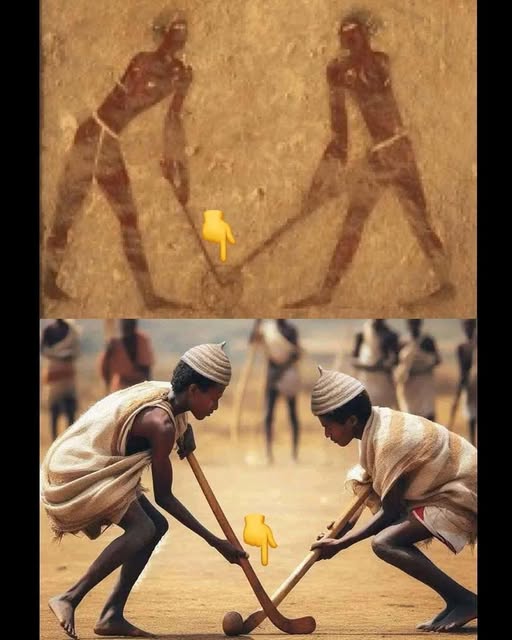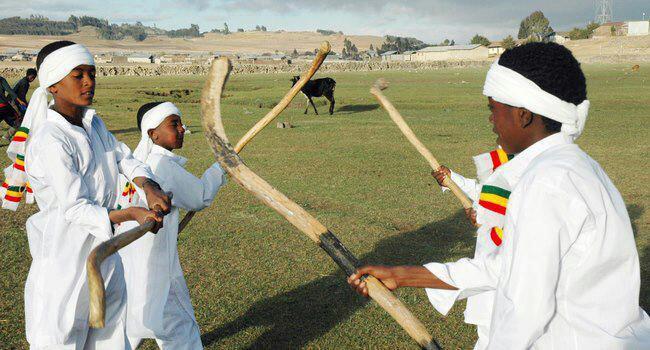
The Ethiopian Game called (Yegena Chewata) goes way back to their African ancient khemtyu, Kush /punt ,relatives who also played the same game in ancient times and this Game is also the Origins of Hockey. The Ancient ta ntchru -Africa’s original name ) hapi-Nile Valley Culture is still Alive and well, so is the Descendants of the Ancient Khemtu /kash /punt in East Africa.
Genna (Ethiopia)

- Name of sport (game):Genna
- Name in native language:ገና (From Amharic – the official language of Ethiopia) means Christmas. Genna was grown and practiced around this holiday (to be more specific around january 7th becouse of use of Julian calendar in Ethiopia), hence the name. This game is also known as Yegena Chewata (የገና ጨዋታ).
- Place of practice (continent, state, nation):The game is practiced only in Ethiopia.
- History:Genna is the oldest game practiced in Ethiopia. It has been practised for centuries, however, the exact history and the time of creation are not known. There are two legends that may indicate that the sport was invented in the first centuries AD.
First legend says that when the news of the birth of Jesus reached the Ethiopian shepherds, they began hitting the ball with their shepherd’s crooks in a fit of happiness, and that is how genna and field hockey were created.
However, second legend is slightly different. Its protagonists are the Three Wise Man who, after visiting little Jesus, returned home. During their journey they met a man who denied the fact of birth. Then the monarchs murdered him and began playing genna with his head.
It is noteworthy that in the first centuries games similar to hockey were very popular. People have been playing games such as pelota purépecha (Mexico) or hurling (Ireland). - Description:Every team has at least 7, but not more than 10 players. One of them is a goalkeeper. Players can be replaced at any time by somebody from up to 5 people waiting on the bench.
The tennis size ball is made of tree roots and decorated so its colors improve its visibility. The stick, on the other hand, is made of eucalyptus branches and rounded at the end. It is slightly longer than the player’s shoulder.
Playing field is 300 meters long and 200 meters wide. To get a point, players need to hit the ball to the opponent’s goal. At the beginning two players from different teams face each other in the middle of the field, they contact their sticks 3 times and then fight over a ball.
Game is divided into two 30-minute halves, and the winner is the team that scores more goals. There is also a 10-minute break after first 30 minutes. In the event of a tie, there is a 20-minute overtime. - Current status:Practiced sport.
Matches always take place on the 7th of January; on other days, people just do not play genna.


